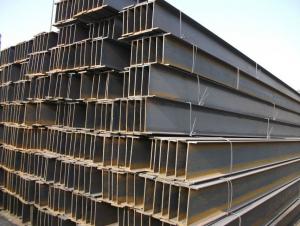Metals have been a cornerstone of human civilization for thousands of years, shaping the way we live and interact with the world around us. From the earliest tools and weapons to the most advanced technological devices, metals have played an integral role in our progress. One of the most fascinating aspects of metals is their magnetic properties, which have both intrigued and challenged scientists, engineers, and everyday people alike.
The Allure of Magnetism
Magnetism is a force that has captivated the human imagination for centuries. From the ancient Greeks who first discovered the magnetic properties of lodestones to the modern-day applications in medicine and technology, the allure of magnetism has not waned. Metals, with their unique atomic structures, exhibit a range of magnetic behaviors that can be both beneficial and detrimental, depending on the context.
A Closer Look at Metal and Magnetism
To understand the magnetic properties of metals, we must first delve into the atomic structure of these materials. Metals are composed of atoms arranged in a crystal lattice, with a sea of valence electrons that are free to move throughout the material. These electrons are responsible for the magnetic properties of metals, as they can align their spins to create a magnetic field.
Ferromagnetism: The Powerhouses of Magnetism
Ferromagnetic metals are the superstars of the magnetic world. These metals, such as iron, nickel, and cobalt, have the ability to maintain a strong magnetic field even after the external magnetic force is removed. This property, known as remanence, makes them ideal for applications like permanent magnets and electromagnets. The secret to their success lies in the alignment of their electron spins, which form regions called domains. When these domains align, they create a powerful magnetic force.
Paramagnetism: The Helpers of Magnetism
Not all metals are as strong in their magnetic prowess as ferromagnetic metals. Paramagnetic metals, such as aluminum and platinum, have a weaker but still significant magnetic response. They align their electron spins in the presence of a magnetic field but lose this alignment once the field is removed. This makes them useful for applications that require a temporary or controllable magnetic force.
Diamagnetism: The Rebels of Magnetism
At the other end of the spectrum, we have diamagnetic metals, like copper and gold. These metals are the rebels of the magnetic world, as they exhibit a weak repulsion to magnetic fields. Their electron configurations result in a cancellation of magnetic moments, making them less susceptible to external magnetic forces. Diamagnetic metals are often used in specialized applications where magnetic interference is undesirable.
The Practical Side of Metal Magnetism
While the science behind metal magnetism is fascinating, it’s the practical applications that truly showcase the versatility of these materials. From the simple refrigerator magnet to the complex workings of an MRI machine, metals with magnetic properties have found their way into various aspects of our lives.
Everyday Uses: The Unsung Heroes
Refrigerator magnets, magnetic toys, and even the humble paperclip are examples of everyday items that rely on the magnetic properties of metals. These seemingly mundane applications are a testament to the ingenuity of human innovation and the enduring utility of metals.
Industrial Applications: The Workhorses
In the industrial world, magnetic metals are put to the test in more demanding environments. From lifting heavy machinery with magnetic cranes to sorting metals in recycling plants, the strength and reliability of magnetic metals are crucial for the efficiency and safety of these operations.
Medical Marvels: The Healers
The medical field has also embraced the power of magnetic metals, particularly in the form of MRI machines. These machines use powerful magnetic fields to create detailed images of the human body, aiding in the diagnosis and treatment of various conditions. The use of magnetic metals in medicine is a shining example of how science and technology can work together for the betterment of human health.
The Future of Metal Magnetism
As we continue to explore the potential of metals and their magnetic properties, the future looks bright. With advancements in nanotechnology and materials science, we can expect to see even more innovative applications of magnetic metals in the coming years. From self-healing materials to energy-efficient devices, the possibilities are endless.
Embracing the Magnetic World
In conclusion, the magnetic properties of metals are a testament to the versatility and adaptability of these materials. From the microscopic world of atoms to the macroscopic world of human invention, metals have proven to be invaluable partners in our quest for knowledge and progress. As we continue to unlock the secrets of metal magnetism, we can only wonder what new discoveries and applications await us. So, the next time you pick up a magnet or marvel at the power of an MRI machine, take a moment to appreciate the incredible journey of metals and their magnetic properties.

